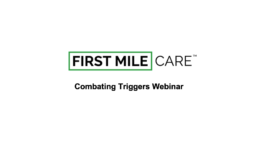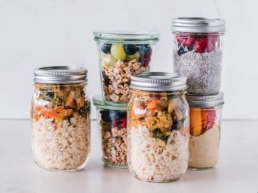By Irazema Garcia, First Mile Care DPP Coach
The National Diabetes Prevention Program (DPP) helps participants learn to make small, sustainable behavioral changes that, over time, will have positive health benefits and reduce or reverse their prediabetes status. As part of the DPP curriculum, First Mile Care offers an ongoing series of “Diabetes Prevention in Action” webinars that cover a variety of healthy practices in not only eating and meal planning, but fitness, stress management, mindfulness, motivation, and behavioral triggers.
By triggers, I mean a stimulus, an activation point, a flashback, a reminder, or a reaction. A trigger gets the ball rolling towards taking an action which could have a positive or negative result. Unfortunately, triggers can sometimes get in the way of achieving goals you’ve set for yourself in your DPP action plan. So, if you can identify your triggers and understand them better — why you do what you do and when — you may be able to overcome the obstacles triggers create and keep making progress towards habit changes that are going to last not just months, but years.
Adjusting your triggers can set you free of your negative behaviors. But first you have to figure out how your triggers are built.
Trigger = Cue + Routine + Reward
A trigger has three parts: the cue, the routine, and the reward:
- Cue: The spark that sets off an action. A cue can be an event (e.g., Thanksgiving, a birthday party); a place (e.g., a movie theater makes you want popcorn); a person (e.g. you and your best friend always have coffee together), or an emotion (e.g., you do X when you’re sad, lonely, tired, or angry).
- Routine: The action that you take as a result of the cue. For example, buying popcorn simply because you’re in the movie theater; drinking coffee because you are with your friend; pouring a glass of wine because you’re alone at home.
- Reward: The satisfaction that you get from that routine, whether it’s the feeling of nostalgia every time you eat movie popcorn, or the joy you get from meeting your friend. The reward is what you’re really searching for. As humans, we want that gratification.
Finding a substitute routine
A very common trigger is to eat when you’re bored because it gives you something to do — even though you may not be physically hungry. In this case the cue is boredom — it kicks off the behavior. The routine, or action, is to eat a snack. The true reward for eating is not the snack (because you’re not physically hungry) but that you are no longer bored (at least for the time that you’re eating). The act of eating relieves the boredom you are facing.
So, what can be done when boredom strikes? One thing is to substitute the routine (eating) that stems from your cue (boredom) BUT will still give you the reward you seek (not being bored). Switching out the normal routine with a new one that can reinforce your goals can help you achieve success.
For example, when you feel bored (the cue), you can try a new routine: go for a walk or read a book. Call a friend. Rearrange your closet or spice rack. The important thing is to establish a new action to substitute for the old one (eating). Your reward will still be that you’re no longer bored, because going for that walk (or reading that book, or calling that friend) is keeping you busy and thus, ending your boredom.
What your brain wants is the reward. The action isn’t as important.
Getting your reward
Oftentimes when you try to deal with a trigger, especially related to eating, you try to go cold-turkey and eliminate the routine. You deny yourself through sheer willpower. You feel the cue (boredom), but decide not to take any action. What ends up happening? You don’t receive the reward you were after.
“I am bored but I will not eat anything,” you vow. However, not eating anything is not a remedy for boredom. Your brain tries to figure out what the reward is in not eating, and most often cannot find one. As a result, you’re not satisfied. You’re still bored. And so what often happens is that you continue to seek that reward, and no matter how many times you tell yourself you will not eat, you end up eating (sometimes even more than you desire) in order to find that reward. That’s why it’s very challenging to eliminate a routine without finding an adequate substitute. For long-term success, you’ll need a new routine to substitute for the old one.
Watch my webinar below and think about what your triggers are, for both positive and negative behaviors. What new routines can you find for actions so you still get the rewards you desire?
To learn more about how you can benefit from the First Mile Care Diabetes Prevention Program, take the prediabetes risk test and get started today!




